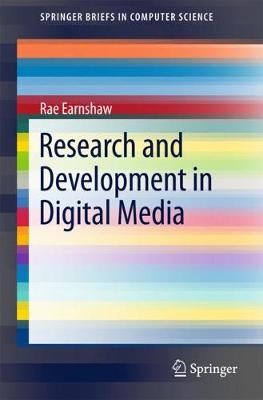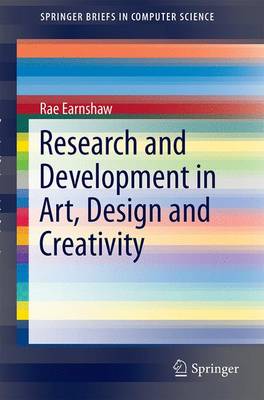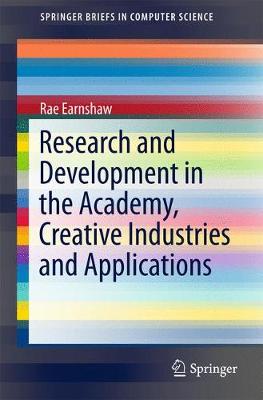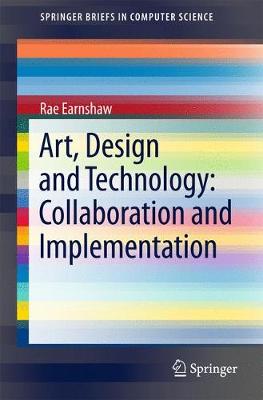SpringerBriefs in Computer Science
5 total works
This book presents an overview of the technical underpinnings in the field of digital media. This includes theory, imaging, big data, interaction, and the research and development that is needed in order to make digital media interfaces more natural and easy to use. Grant funding sources for R & D are detailed and current priority areas are summarized. Developments in the relevant commercial areas are also reviewed.
This is Professor Earnshaw’s fifth book in the series on digital media and its applications and creative uses. These books explain the significance and importance of digital media and how it has developed and advanced.They also explore the impact digital media is having on a range of domains including art and design, the creative industries, visual analytics, big data, and digital humanities.The convergence of IT, telecommunications and media is bringing about a revolution in the way information is being collected, stored, accessed and distributed. Digital media is expected to play an increasing role in these processes. State of the art digital technologies are increasingly utilized in order to deliver to the user requirements and also to be effective and efficient in this delivery, given the increasing demands by users and other third parties involved in the content creation and service delivery pipeline.
Research and Development in Digital Media will be invaluable for readers that want a summary of the technical research and development aspects of digital media, how such work is being funded, and the kind of changes in digital media provision that may result.
The author looks at how creative processes and ideas are devised and how technology and its applications are changing these processes and the way in which research is developed and advanced. The use of digital environments in art and design, and the application of new frameworks, tools, and opportunities for the expression of new ideas and design are discussed.
Research and Development in Art, Design and Creativity is an essential read for anyone interested in the concept of collaboration and communication and how this applies to art and its creation.
Research and Development in the Academy, Creative Industries and Applications
by Rae Earnshaw
This book examines how creativity feeds through into typical application areas, and the lessons that can be learned from this. A number of Case Studies in creative and general application domains are included which illustrate how the academy and industry can collaborate to mutual benefit and advantage. It also examines the pros and cons of the collaboration, and what lessons can be learned from successes or failures in aspects of the implementation and delivery.
The academy has played a key role in the past in the research and development of key ideas and patents that have been migrated into successful industrial products and services and continues to do so. A variety of models of interaction between the academy and industry have been developed depending on the circumstances of the institution, its mission, its values, its expertise, and its relationship to the local and cultural environment in which it is situated. These models are reviewed and evaluated.
The process of initial idea through to design and successful implementation is a pipeline. If this process requires the involvement of technology (as is more often the case – as creative applications are increasingly dependent on technology) then there is need to understand how this can efficiently and optimally be done. A number of factors tend to be generic and permeate many application areas (such as bandwidth requirements, use of colour, interaction methods) whilst others are more customized with specialist hardware and software (e.g. shared virtual environments, augmented reality).
This book examines how digital technology is being used to assist the artists and designers. The computer is able to store data and reproduce designs, thus facilitating the speed-up of the iterative process towards a final design which meets the objectives of the designer and the requirements of the user. Collaborative design enables the sharing of information across digital networks to produce designed objects in virtual spaces. Augmented and virtual reality techniques can be used to preview designs before they are finalized and implemented.
Art and design have shaped the values, social structures, communications, and the culture of communities and civilisations. The direct involvement of artists and designers with their creative works has left a legacy enabling subsequent generations to understand more about their skills, their motivations, and their relationship to the wider world, and to see it from a variety of perspectives. This in turn causes the viewers of their works to reflect upon their meaning for today and the lasting value and implications of what has been created.
Art installations are harnessing modern technology to process information and to display it. Such environments have also proved useful in engaging users and visitors with real-time images and interactive art.
This is Professor Earnshaw's fourth book in a series that focuses on digital media and creativity, and through the use of Case Studies; the theoretical, practical and technical aspects of digital media are examined. Readers are informed about how the user as content creator, publisher and broadcaster is changing the traditional roles of news media, publishers and entertainment corporations. Topics such as the evolution of digital imaging and the phenomenon of social media are discussed in relation to this. Professor Earnshaw also demonstrates how changes in technology produce shifts in the ways that consumers utilize it, in an increasing variety of application domains such as e-books, digital cameras, Facebook and Twitter.
State of the Art in Digital Media and Applications will be invaluable for readers that want a comprehensive look at how emerging digital media technologies are being used, and how they are transforming how we create, consume, exchange and manipulate media content.




